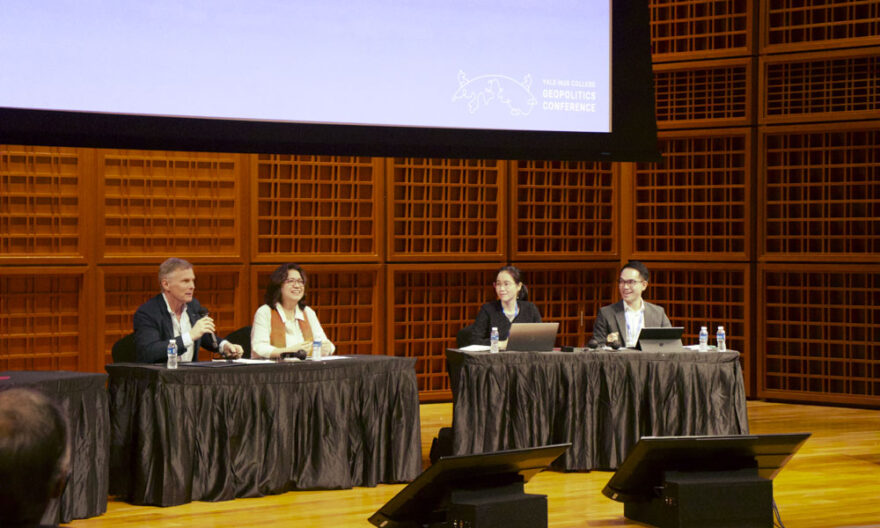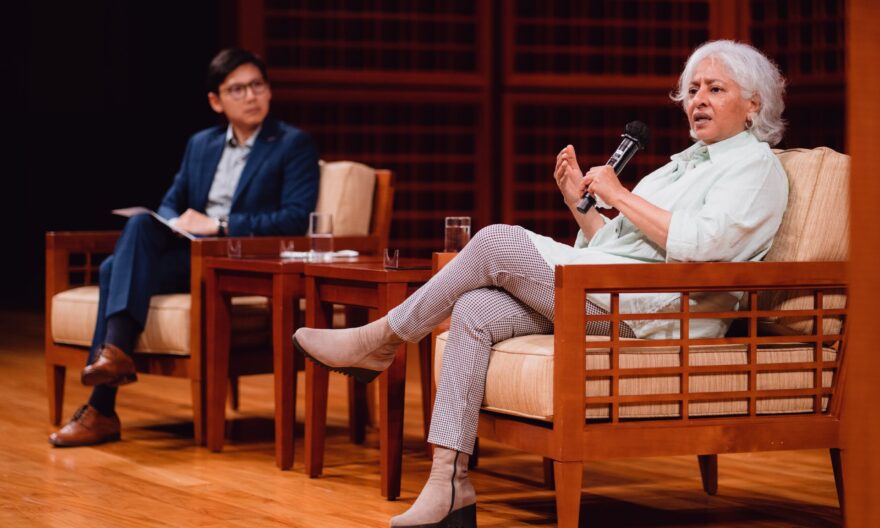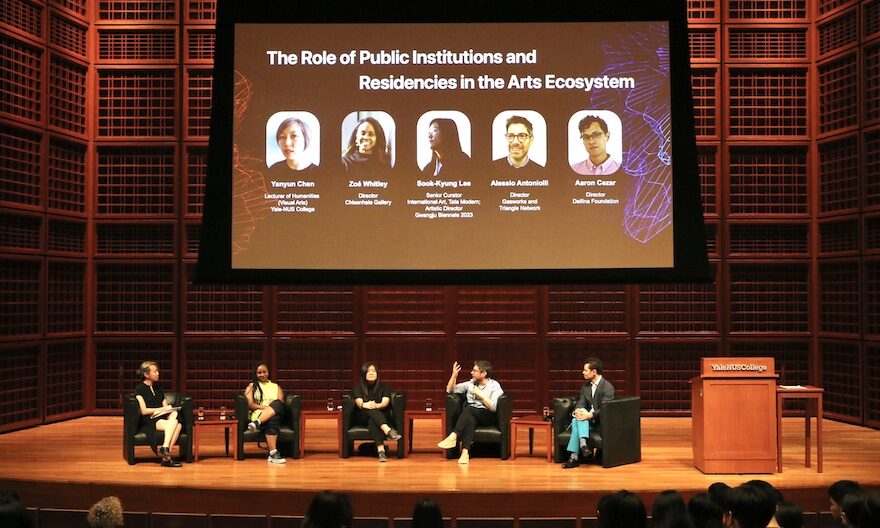Exploring contemporary Asian art at inaugural donor-supported lecture
Inaugural lecture supported by the Andreas Teoh Contemporary Asian Art Programme traces legacy of contemporary art movements in Asia
 President of Yale-NUS College and Professor of Humanities (History) Tan Tai Yong delivered the opening remarks at the inaugural lecture supported by the Andreas Teoh Contemporary Asian Art Programme and welcomed the speakers to Yale-NUS. Image taken by Glen Ang,
President of Yale-NUS College and Professor of Humanities (History) Tan Tai Yong delivered the opening remarks at the inaugural lecture supported by the Andreas Teoh Contemporary Asian Art Programme and welcomed the speakers to Yale-NUS. Image taken by Glen Ang,
For thousands of years, different forms of art produced among various Asian societies have inspired communities globally. Yet, in the modern era, Asian art and artists comprise a disproportionately small part of the global art discourse. Aiming to fill this gap in our knowledge of global art, the inaugural Andreas Teoh Contemporary Asian Art Programme lecture titled ‘The Challenge of Asian Art’ was held at Yale-NUS College on 17th January during Singapore Art Week 2022. Some of the foremost thinkers on regional contemporary art were invited to discuss their perspective on the impact of modernity in Asia, as well as the changing role of an historic Asian art medium — ink.
Speaking first about the place of Asian art in contemporary discourse, Mr Calvin Tan Boon Hui, Executive Director of Arts House Limited, highlighted its contradictory position. Mr Tan shared that whenever Asian art is mentioned in the global art narrative, it is always described not for what it is — a distinct art form situated in a distinct geography, but instead for what it is not — traditional, orthodox, “Western” art.
“Given that the starting point we are coming from is a global narrative [which] for long periods of historical time has been written from the [perspective] of the Euro-American narrative, everything else that is not Euro-American in a sense, has been defined in relation, and sometimes in opposition to that.”
Mr Tan added that the “incorporation of art from the lens of the places we call Asia, now involves looking at and having an expanded understanding of the role of art and artists, within national and international trajectories, [and] upon cultivating an acceptance of the moral aesthetic.”
Relying on creating a fusion of “traditional” with “modern”, he highlighted how art by Asian artists is often used to underscore the various conditions they see around them — whether that be the post-colonial struggle in India or conditions of exile by Syrian refugees — in order to convey the true reality of their experience to the audience.
On the impact of the recent COVID-19 pandemic on the art industry, Mr Tan shared that the pandemic has exposed the systemic marginalisation of minority artists and how art history has sidelined a lot of interesting and important work. He added, “Coming out of the pandemic, there is now an accepted push to redress that balance, to bring the silenced voices and artistic expression from minorities back into the mainstream.”
 The inaugural lecture supported by the Andreas Teoh Contemporary Asian Art Programme was held at Yale-NUS on 17th January, where prominent speakers shared about the challenge of Asian art. From left: Dr Yanyun Chen, Mr Calvin Tan Boon Hui and Mr Craig Yee during the question and answer segment. Image taken by Glen Ang.
The inaugural lecture supported by the Andreas Teoh Contemporary Asian Art Programme was held at Yale-NUS on 17th January, where prominent speakers shared about the challenge of Asian art. From left: Dr Yanyun Chen, Mr Calvin Tan Boon Hui and Mr Craig Yee during the question and answer segment. Image taken by Glen Ang.
Mr Craig Yee, founding Director of Ink Studio, highlighted how different artists have used one such tradition, ink, in modern contemporary art to articulate East Asian insights into our shared postmodern condition — that consciousness is embodied, that material reality is a dynamic process, that language and truth is contextual, and that knowing is largely if not exclusively experiential. Ink Studio is a Beijing-based gallery and experimental art space devoted to documenting and exhibiting China’s leading contemporary ink artists.
Ink art, a carbon-based material in water applied on an absorbent paper with a pliant brush, was an art form that originated two thousand years ago during the Han dynasty of China. Originally, ink was used for calligraphy, which was an art form that viewed the brush mark as an extension of the artist’s mind and body. The art of calligraphers signified the character of artists themselves and the momentary state of their heart and mind.
To Mr Yee, these very same themes of mind-body connection carried over into the contemporary ink art of today. As he shared, “This East Asian premodern worldview is, I would argue, profoundly compatible with and sympathetic to the Western, specifically Euro-Anglo postmodern world we live in today. And that is, I believe, the distinctive potential of programming contemporary art based on historical station aesthetics and practices.”
“It allows us to experience our contemporary postmodern reality or form a cultural perspective that has been unfolding and developing very differently over the past two to three thousand years in Asia. We think of the postmodern as something new and of our time. However, in East Asia, the assumptions that underlie our postmodern world are as old a record as culture itself.”
Dr Yanyun Chen, Lecturer of Humanities (Visual Arts) at Yale-NUS College and inaugural fellowship recipient of the Andreas Teoh Contemporary Asian Art Programme, moderated the question and answer segment of the lecture. On the challenges to learning about Asian art, Dr Chen expressed that the difficulty lies in developing a language, the vocabulary and understanding the context in which the artist is operating and engaging with their own geographies and politics, and sharing that with an international audience that may or may not come from the same cultural or historical background.
“I think this is a really great way of expanding our knowledge of the international arts scene. This programme brings new international ideas to Singapore and exposes students to different ways of considering how contemporary art is moving beyond our shores,” she added.
Watch the full Lecture here .




